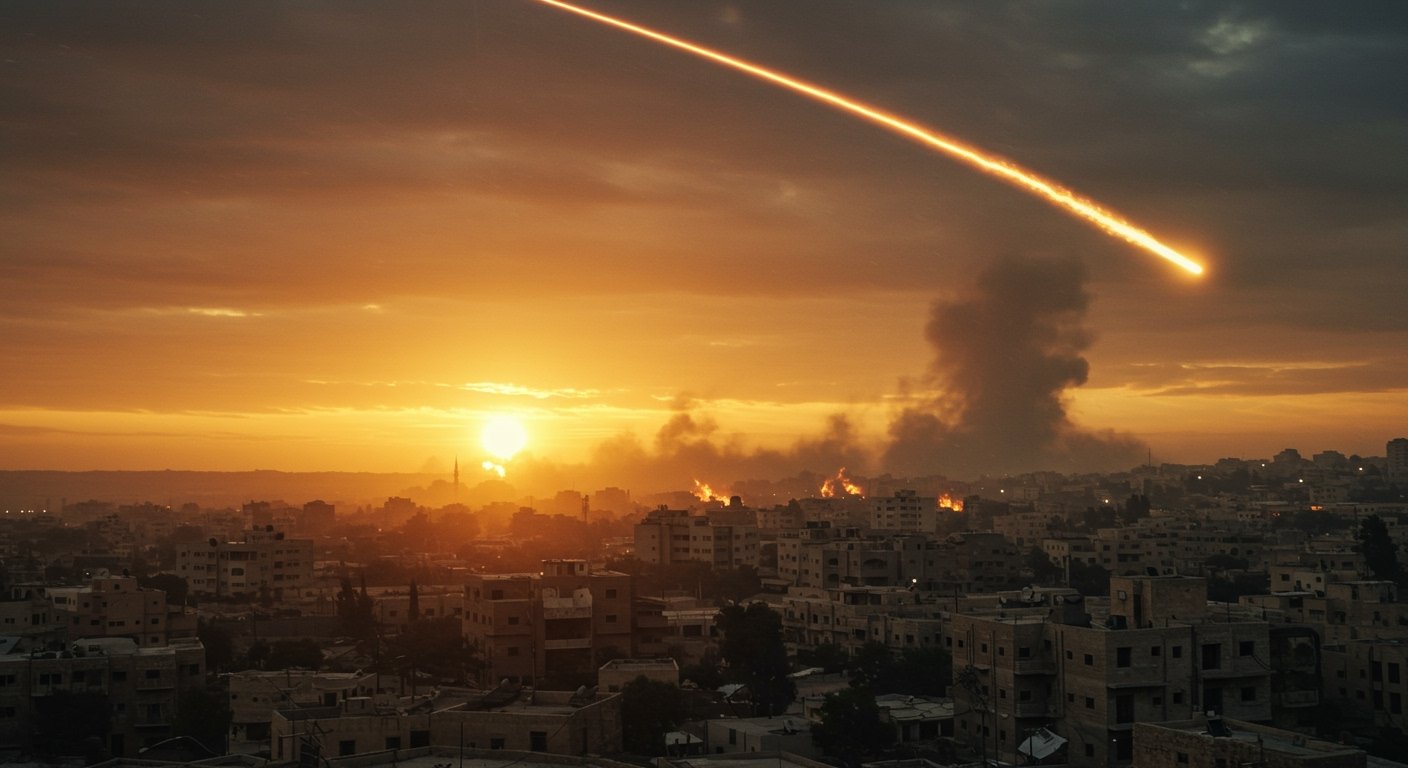A crucial U.S.-brokered ceasefire between Israel and Iran dramatically collapsed on June 24, 2025, mere minutes before it was scheduled to take effect. The short-lived truce attempt was shattered by immediate accusations and actions from both sides, leading U.S. President Donald Trump to assert that, in his view, both nations had violated the nascent agreement he had announced earlier.
Ceasefire Collapse and Initial Attacks
The fragile peace initiative, aimed at de-escalating rapidly mounting tensions in the Middle East, faltered almost instantly. Just moments before the agreed-upon ceasefire time, Iran reportedly launched a missile strike targeting Beersheba, a significant city in southern Israel. This attack resulted in a tragic loss of life, killing five civilians and injuring at least 20 others, underscoring the immediate humanitarian cost of the renewed hostilities.
The timing of the strike, preceding the truce deadline, appeared to preemptively derail the diplomatic effort, sending shockwaves through a region already on edge.
Accusations and Denials Trade
In the aftermath of the initial strike, tensions soared as both nations leveled accusations against each other.
Israel vehemently accused Iran of launching missiles into its airspace even after the ceasefire was supposed to commence. Jerusalem swiftly vowed to retaliate forcefully for what it described as a clear violation of the agreement.
Conversely, Iran’s military apparatus issued a denial, refuting the Israeli claims that its forces had fired on Israel during or after the stipulated ceasefire period. This conflicting accounts further muddied the situation, making it difficult to ascertain the precise sequence of events and responsibilities in the critical moments surrounding the truce’s intended start.
U.S. Mediation Effort Falters
The breakdown of the ceasefire represented a significant setback for the United States and President Donald Trump, who had personally announced and brokered the agreement.
Reacting to the rapid deterioration of the situation, President Trump publicly stated his perspective on the events. He declared that, in his view, both Israel and Iran had violated the agreement he had announced earlier, signaling his disappointment and placing responsibility on both parties for the truce’s failure. His statement highlighted the challenges of enforcing a ceasefire in an environment characterized by deep mistrust and ongoing conflict.
Israel’s Military Posture and Conditions
Responding directly to the reported Iranian violation, Israeli Defence Minister Israel Katz issued a firm directive to the Israel Defense Forces (IDF), ordering them to respond strongly to the breach. This command underscored Israel’s commitment to a robust defense posture and its stated policy of zero tolerance for attacks against its territory.
Israel confirmed that it had indeed agreed to President Trump’s proposal for a bilateral ceasefire. However, it specified that this agreement came after achieving the objectives of “Operation Rising Lion,” an apparent reference to prior Israeli military operations against Iranian or Iran-aligned targets. Jerusalem also reiterated its conditional acceptance of the truce, adding that it would respond forcefully to any violation of the agreement, signaling its readiness to resume offensive operations if provoked.
Preceding Events and Broader Context
The collapse of the ceasefire occurred amidst a backdrop of already escalating tensions in the region. Ahead of the attempted truce, the Israeli Air Force had conducted strikes targeting missile launchers located in western Iran. This action was part of the ongoing exchanges that characterized the volatile relationship between the two adversaries.
The current spike in hostilities follows significant geopolitical developments, most notably recent U.S. bombing campaigns targeting three Iranian nuclear sites. These U.S. actions had dramatically heightened tensions across the Middle East, creating a highly unstable environment that made diplomatic breakthroughs, such as the attempted ceasefire, exceedingly difficult to sustain.
Regional Impact and Evacuation Efforts
The renewed conflict and heightened regional instability have had tangible consequences, prompting various nations to take protective measures for their citizens abroad.
India, maintaining a diplomatic presence and a significant diaspora in Iran, has been actively engaged in evacuating its nationals. The evacuation efforts continued on June 24, with 292 Indian nationals successfully brought back to New Delhi from Mashhad. This latest group added to the growing number of Indians who have been airlifted from the country, bringing the total evacuated so far to over 2,200.
The ongoing evacuations underscore the severity of the situation and the concerns of governments regarding the safety of their citizens amidst the escalating military confrontation between Israel and Iran.
Outlook Remains Precarious
The rapid failure of the U.S.-brokered ceasefire and the immediate return to hostilities cast a pall over prospects for de-escalation in the near term. With both sides trading accusations and Israel vowing retaliation for the attack on Beersheba, the potential for further military confrontation remains high. The international community watches closely, as the breakdown of this truce threatens to plunge the region into deeper conflict.





